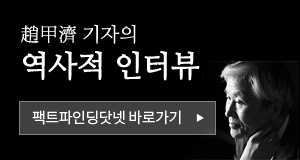Ⅰ-3-3
Take a snapshot of the old world 15,000 years ago. Except for bits of Siberia, it was full of a new and clever kind of people who had originated in Africa and had colonised first their own continent, then Asia, Australia and Europe, and were on the brink of populating the Americas. They had spear throwers, boats, needles, adzes, nets. They painted pictures, decorated their bodies and believed in spirits. They traded foods, shells, raw materials and ideas. They sang songs, told stories and prepared herbal medicines.
They were 'hunter-gatherers'. On the whole the men hunted and the women gathered: a sexual division of labour is still universal among non-farming people and was probably not shared by their Homo erectus predecessors. This enabled them to eat both meat and veg, a clever trick because it combines quality with reliability.
A. 어휘
except for bits of Siberia 시베리아 일부를 제외하고.
originate 시작되다, 發源(발원)하다.
colonise 식민지화하다, ~에 공동체를 이루어 거주하다.
their own continent 아프리카 대륙. brink 가장자리.
were on the brink of populating the Americas 남북 아메리카주에 거주하기 시작하다. populate 에 살다. trade 교역하다. shells 조개껍질.
raw materials 原料(원료), 가공하지 않은 물품. spear throwers 投槍(투창).
adzes 손도끼. spirits 魂靈(혼령). herbal 약초의.
hunter-gatherer 狩獵採取人(수렵채취인) sexual division of labour 노동의 남녀분업.
universal 보편적인. share 참여하다, 공유하다.
Homo erectus 現生人類(현생인류)인 호모 사피엔스 直前(직전)의 인류.
predecessors 전임자, 이전의 사람. a clever trick 영리한 책략. reliability 신뢰성
B. 구문
-a sexual division. . . .was probably not shared by their Homo erectus predecessors.
[현생인류이전의 사람들인 호모 이렉투스는 남녀분업을 하지 않았던 것 같다.]
-This enabled them. . . . reliability. this는 남녀분업. a clever trick 앞 에 which was 생략.
['이것은 그들로 하여금 고기와 채소 둘 다를 먹는 것을 가능케 하였는데 분업은 식량의 질(quality)과 식량공급의 안정성(reliability)을 결합해 주기 때문에 영리한 방책이다.' 분업에 의해서 식품의 질(quality)-동물성 식품과 식물성 식품의 결합-과 식량획득의 안전성(reliability)을 가지게 됨.) 남자는 수렵을 하고 여자는 식물성 식품을 채집함으로써 식량확보의 기회가 보다 더 보장되고 영양상태도 좋아짐.]
Ⅰ-4-4
Several archaeologists and anthropologists now argue that violence was much more pervasive in hunter-gatherer society than in more recent eras. From the !Kung in the Kalahari to the Inuit in the Arctic and the aborigines in Australia, two-thirds of modern hunter-gatherers are in a state of almost constant tribal warfare, and nearly 90% go to war at least once a year. War is a big word for dawn raids, skirmishes and lots of posturing, but death rates are high--usually around 25-30% of adult males die from homicide. The warfare death rate of 0.5% of the population per year that Lawrence Keeley of the University of Illinois calculates as typical of hunter-gatherer societies would equate to 2 billion people dying during the 20th century.
At first, anthropologists were inclined to think this a modern pathology. But it is increasingly looking as if it is the natural state. Richard Wrangham of Harvard University says that chimpanzees and human beings are the only animals in which males engage in co-operative and systematic homicidal raids. The death rate is similar in the two species. Steven LeBlanc, also of Harvard, says Rousseauian wishful thinking has led academics to overlook evidence of constant violence.
A. 어휘
archaeologists 고고학자. anthropologists 인류학자.
pervasive 넘치는, 蔓延(만연)하다.
the !Kung in the Kalahari 아프리카 칼라하리사막에 사는 컹族(족).
the Inuit in the Arctic 북극해에 사는 이뉴이트族(족). aborigines 원주민.
two-thirds 3분의 2. tribal warfare 부족전쟁. raid 습격. skirmish 소규모 接戰(접전).
posture 자세를 취하다, 뽐내듯 몸을 놀리다. homicide 살인. calculate 계산하다.
equate 동등하다, 등식화하다. pathology 병리. natural state 자연상태.
engage 참여하다, 종사하다. academics 대학생, 교수, 학자.
Rousseauian wishful thinking 룻소적인 희망사항
B. 구문
- the !Kung in the Kalahari 남아공화국 칼라하리 사막에 사는 원시종족.
- War is a big word for dawn raids, skirmishes and lots of posturing. . .
[전쟁이라는 말은 새벽기습, 소규모 충돌과 많은 무력시위를 확대해서 하는 말이다.]
-as typical of hunter-gatherer societies 수렵채취사회에 특유한 것으로서
-The warfare death rate of 0.5%. . . . 20th century.
주어는 the warfare death rate, 동사는 would equate to.
[일리노이대학교의 로렌스 킬리교수가 수렵채취사회의 특유한 현상으로 평가하는 전체 인구 중 연간 0.5%의 전쟁사망자수는 20세기 전쟁사망자수로 換算(환산)하면 20억과 동등하다.]
Hunter-gatherers, Noble or Savage? ②
- 朴承用
- ▶ 필자의 다른 기사보기
- 2009-03-05, 11:14



















